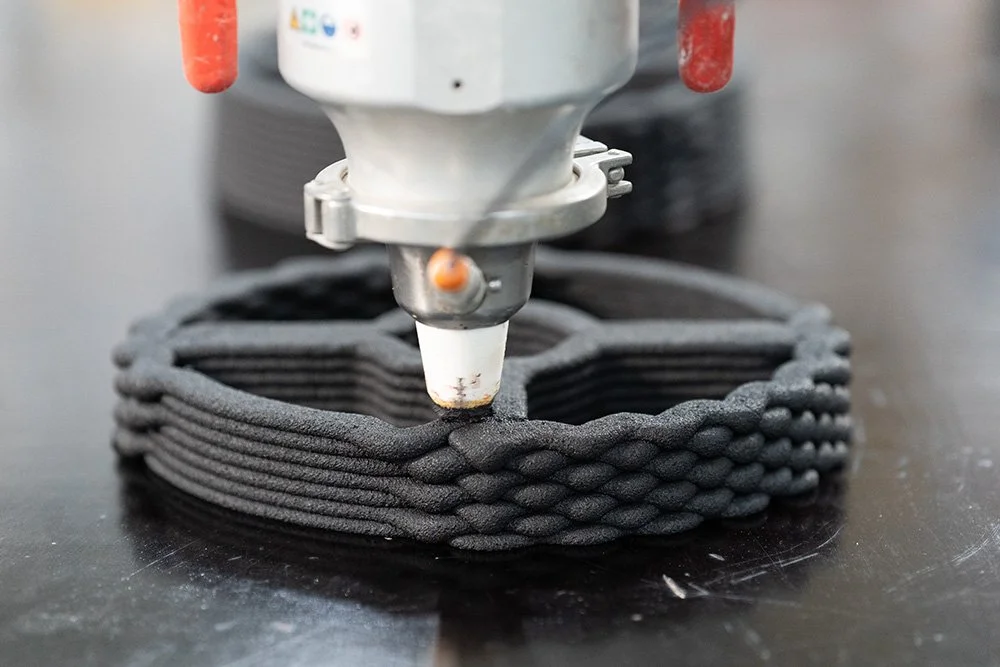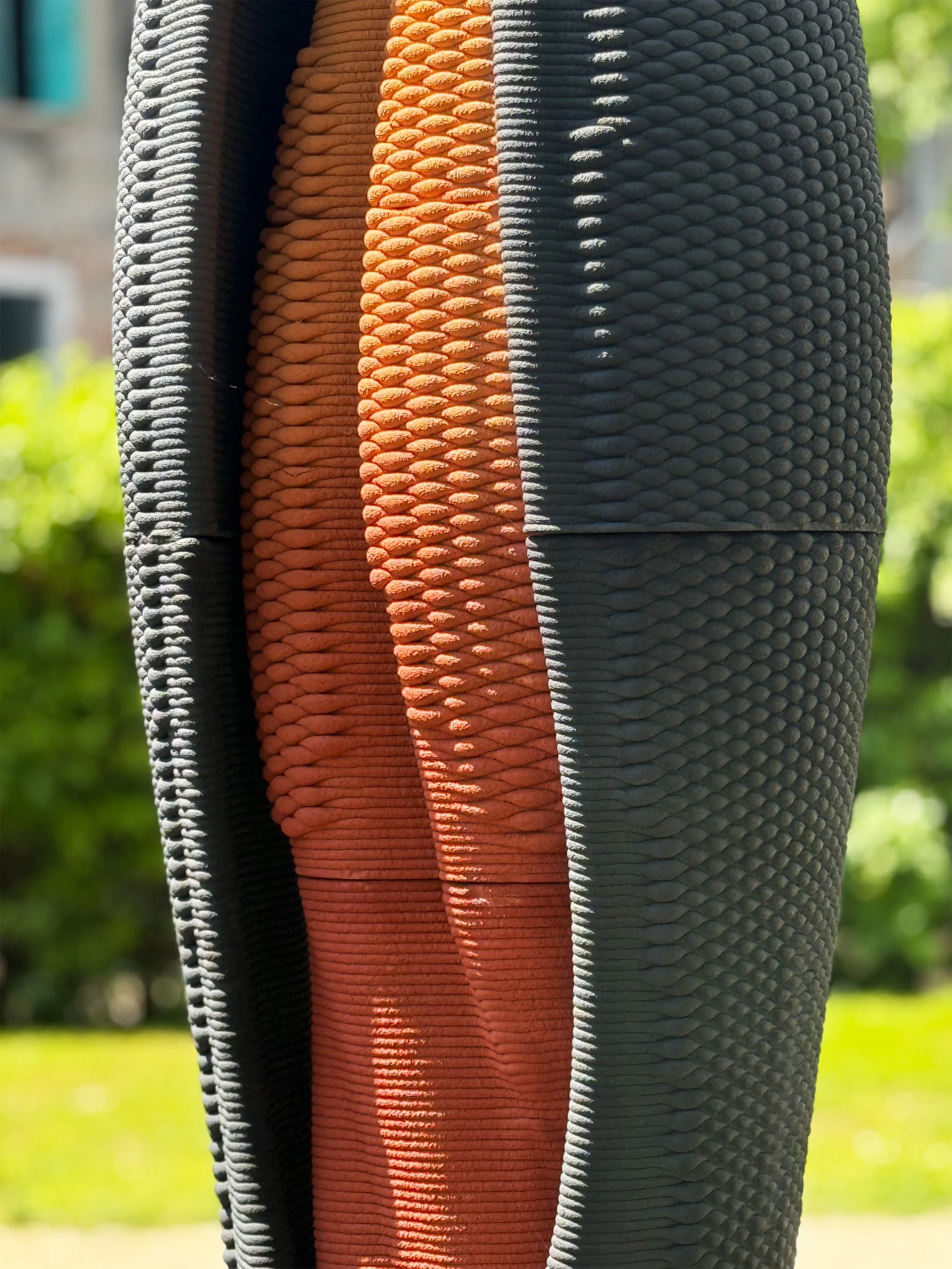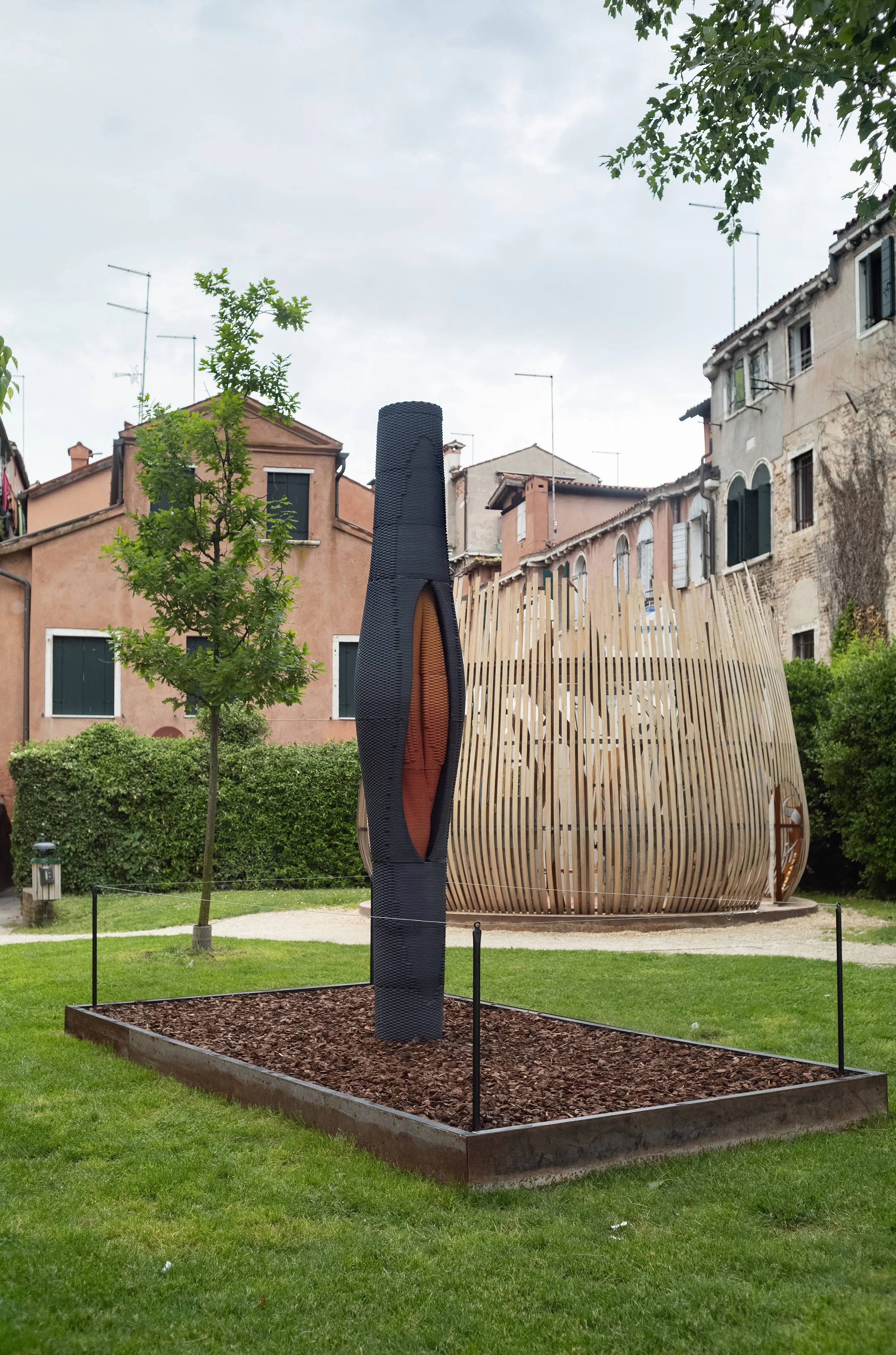
Meet us in the Giardini della Marinaressa, Venice!
Duality is part of the Time.Space. Existence. Exhibition organised by the European Cultural Center, Architecture Biennale 2025 Venice.
Duality of Skin & Core
Time. Space. Existence. Exhibition
European Cultural Center, Architecture Biennale Venice 2025
Duality is an architectural proto-structure part of the Computational Concrete Columns-Series developed as a collaboration between Assist. Prof. Cristina Nan and architect Mattia Zucco at the Eindhoven University of Technology. Vertico, a Dutch company specialised in large format 3D printing and Lanxess, a German specialty chemicals company are industrial partners in this endeavour.
The column is understood as a double system of core and skin — a dual system. A particular emphasis is placed on the infill beyond its stabilizing function. Infill systems in additive manufacturing are normally hidden from the viewer. Expressive and ornamental value is not only assigned to the skin but also translated to the infill. By unrevealing the structure through the punctual peeling away of the external skin, the interior infill is exposed rhythmically throughout the height of the column. This reveals the ornamental material potential of the infill and as such of the computational design strategy and robotic fabrication logic. By exposing the core, the tectonic expressiveness of the column as an architectural archetype is magnified.
Colored concrete, made possible by Lanxess pigments, further emphasizes the duality between structural core and sculpted skin. This project challenges the grey uniformity of 3D concrete printing through computational design, tectonic articulation, and material innovation.
Computational Design &
Robotic Fabrication Strategy:
Cristina Nan & Mattia Zucco
Computational Support: Nikolett Ásványi
Structural Engineering: Arjan Habraken
3D Concrete Printing: Vertico (NL)
Pigments & Color Technology: Lanxess GmbH (DE)
Duality of Appearances:
Where Form Meets Perception
The design of Duality plays deliberately with perspective and perception. When approached frontally, the column appears as a solid black, waisted figure, monolithic and opaque. But as one moves around it, the outer skin begins to open rhythmically, revealing a vibrant pigmented core within. This spatial transformation—shifting from concealment to revelation—is central to the design’s narrative. Carefully curated by the designers, this perceptual play draws from architecture’s long-standing tradition of using optical illusion, depth, and perspective to manipulate appearance and create moments of surprise and discovery.














